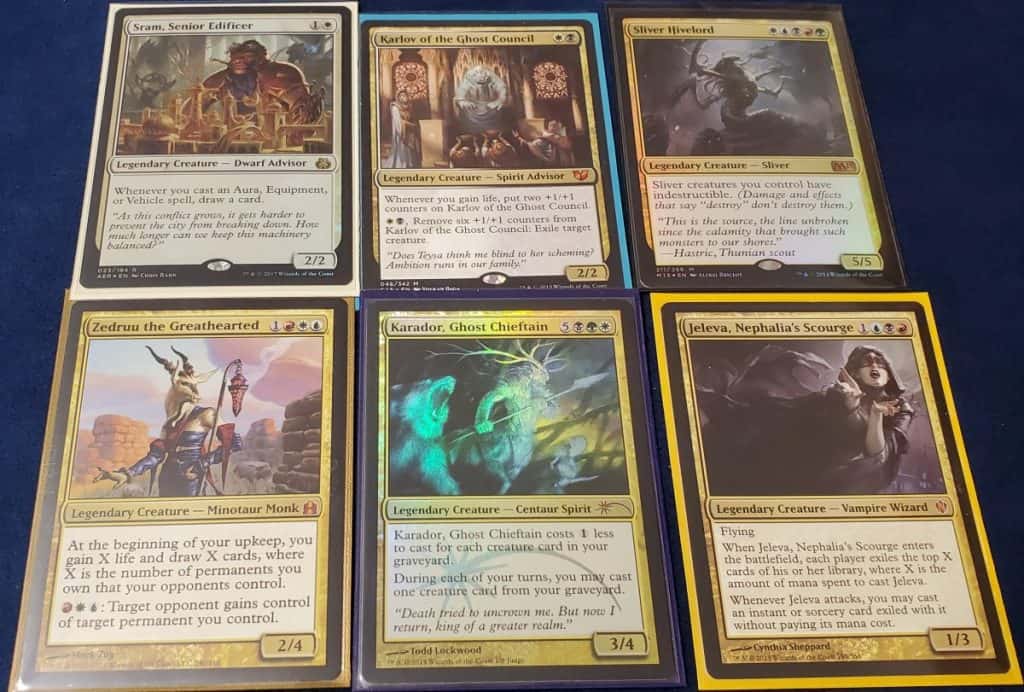If you want to learn how to build a Commander Deck in MTG, you’ve come to the right place! Even if at first I would have been confused, remembering Commander Decks by their old term of EDH.
Those who have been around me for any period of time know that I have a passion for Magic: The Gathering. I’ve played for nearly 15 years, starting with the equivalent of kitchen tables in college, moving into competitive Standard and Extended around Lorwyn and Shards of Alara, and then ending up back at the kitchen tables afterward.
What brought me back to being what some would call “a filthy casual” you ask? EDH (now known as Commander thanks to Wizards of the Coast) is solely responsible for this change.
The MTG Commander format, for those who aren’t aware, is a format where you begin by selecting a legendary creature to serve as your deck’s commander. You must then build a 100 card deck (including the Commander), but with a couple caveats:
- You may have no more than 1 copy of a given card in your deck (excluding basic lands)
- All cards in your deck must only contain mana symbols and colors matching your commander’s color identity
The Commander rules committee already has a rules document that clarifies all the specifics for how to play, so I won’t bore you with any further rehashing here. Instead, we’re going to talk about the deck building lessons I’ve learned since I started playing this format in late 2008/early 2009, and thanks to tools like a SpellTable camera setup or untap.in, you can play Magic online at any distance and a more efficient level right away.
One thing I will note before getting started for more experienced players – I am NOT a competitive EDH (cEDH) player. cEDH values winning above all else, and while part of the same format, behaves much like an entirely different format when it comes to deck construction. I value optimization in my builds above all else, and consider a great deck one that does precisely what it sets out to do.
So how do you build an optimized Commander deck in MTG exactly? Let’s start with the basics.
MTG Commander Deck Building Begins with Your Strategy
The ultimate goal of Commander is to have fun, and one of the easiest ways to ensure you achieve that is by choosing a strategy you’ll enjoy playing throughout the course of your games.
Put more simply – it’s about the journey, not the destination. I also recommend at least considering the gameplay experience of the other players at the table when thinking about what you want to build.
Punishing mechanics like Stax, land destruction, and certain forms of control can be very powerful – but that ultimately doesn’t matter if your friends kick you out of their homes and/or pods and refuse to play with you for making gameplay an absolute slog. A few of the Commanders I’ve built decks around are pictured here.
These represent a VERY small sample of what is out there though. If you aren’t sure of where to begin, here are a few other example Commander Deck strategies to help you get started:
- My commander has an awesome ability that I’d like to build around and support
- I want to play big creatures and spells with cool abilities then run over my opponents with raw power
- If my opponents don’t have mana, anything I do is the most powerful thing at the table
- I’m trying to assemble certain pairs or trios of cards that form an infinite loop that will win me the game
- I’m trying to reduce all opposing libraries to zero cards
- I want to dictate which cards my opponents are allowed to cast so I can curate the most powerful board position
- My commander should be able to attack someone for 21 points of damage and take them out of the game
- Let’s fill the board with as many tokens as possible and turn the swarm loose on my enemies
- There are a lot of cool creatures in “x” creature type – let’s build a tribal strategy and see where it takes us
- Planeswalkers are cool – I bet I can build a deck around those
- People should attack each other more – I’ll make myself an unappealing and/or unavailable target so they do that
- Let’s give everyone extra resources, but ultimately I’m the one who should benefit most from them
I could go on, but you get the idea here. There are an absolute TON of options you can pursue when building a Commander deck, and this is often why people who enjoy the format continually find themselves building new decks. You’ll always find something to learn by trying something new, and there’s almost always a legendary creature you can use as a commander for the strategies you wish to pursue.
This is why learning how to build a commander deck in MTG isn’t just a list of cards – because it’s about pulling in the related deck cards that feed into your specific strategy.
I’ve Chosen My Commander Strategies – Which Cards Should I Play?
This is the single hardest part of deck construction. Magic has over 20,000 unique cards to choose from, and even if you narrow that down by removing the color(s) you can’t play, that still leaves you with thousands of potential card choices.
Generally, I need to be able to say “Yes” to at least one of the following questions before I consider adding a card to my deck.
Does this MTG Card Directly and Efficiently Advance My Strategy?
This question is pretty straightforward, and is often the one my other questions will revolve around. If you’re like me, you end up with a fairly sizable pile of cards to sift through after going through your collection with this in mind, so your followup is to find the cards in this stack that then most efficiently advance your strategy.
Efficiency can be determined simply by the reward you receive at certain mana costs (Counterspell and Cancel do the same thing, but Counterspell costs less), the total payoff you receive from a single card (Hull Breach and Decimate are both good cards, but Decimate usually covers much more ground), or the payoff you receive in conjunction with other cards (Anointed Procession makes other token production cards completely absurd if unchecked, which is usually better than adding one more card that simply makes tokens like Spectral Procession in a token strategy).

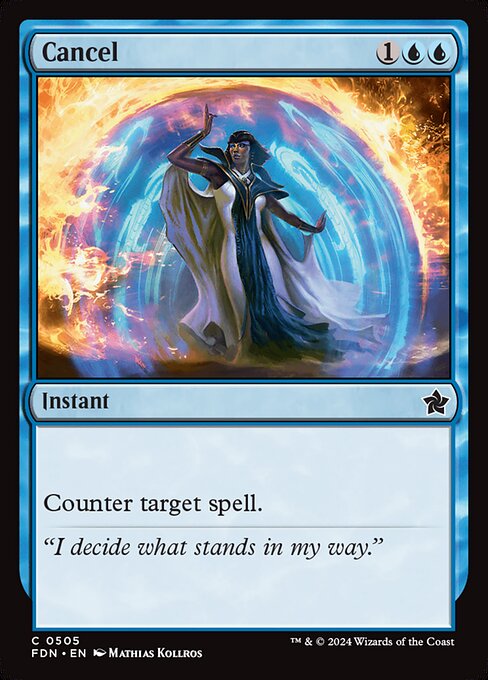


Does this Card Make it Easier to Play My Other Cards?
Mana ramp cards like Rampant Growth and Knight of the White Orchid, mana rocks like Worn Powerstone and Sol Ring, tutors like Idyllic Tutor, Demonic Tutor, or Imperial Recruiter, recursion spells like Eternal Witness and Argivian Find, and card drawing/filtering spells like Rhystic Study, Dig Through Time, Wheel of Fortune, and Faithless Looting can all be cards that fit within this category.
Different colors will excel in their own way of saying “Yes” to this question, so don’t be afraid to get a little creative here. In many cases, cards that play supporting roles in your deck can also double as ways to advance your strategy (Faithless Looting lets you both draw new cards and fill your graveyard with cards you can Reanimate, use to give you a benefit like Anger, or simply make it easier to cast cards like Bedlam Reveler.



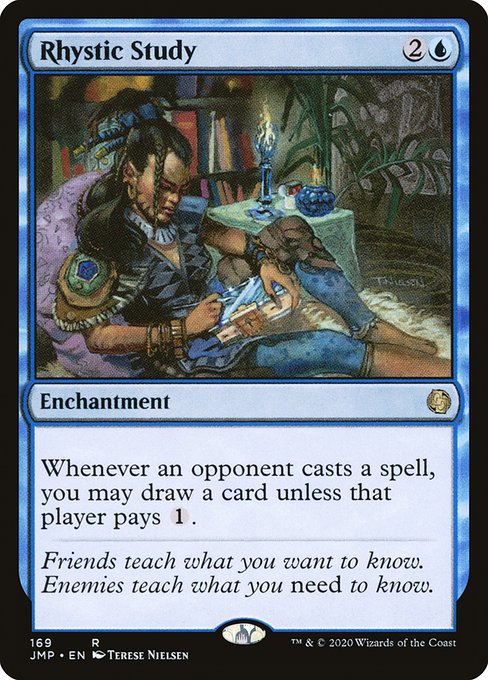
Is this Card Able to Flexibly Interact with Opponents and Disrupt Their Strategies?
Each person at the table is going to be working toward a plan to advance their position and set you back, so you should make sure you are similarly prepared.
Board wipes like Austere Command, Cleansing Nova, Damnation, Toxic Deluge, Cyclonic Rift, River’s Rebuke, Blasphemous Act, Vandalblast, and All is Dust are almost always worth having on hand in some capacity. Spot removal like Beast Within, Swords to Plowshares, Vindicate, Mire in Misery, Cryptic Command, Decimate, and Abrade is also helpful for a more surgical approach to problems at the table.

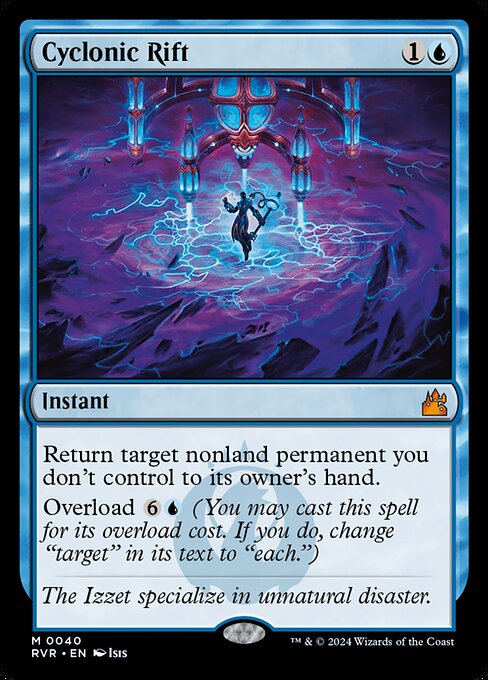


Disruption can also come in a couple other forms: prevention and protection. Cards like Teferi’s Moat, Raking Canopy, Elephant Grass, Ghostly Prison, Arcane Denial, Mindclaw Shaman, Syphon Mind, Relic of Progenitus, and Nevermore can play different roles in stopping a certain type of plan or play from coming to fruition. Meanwhile, cards like Boros Charm, Heroic Intervention, Ghostway, Avacyn, Angel of Hope, and Teferi’s Protection can simply take you out of a bad situation outright.

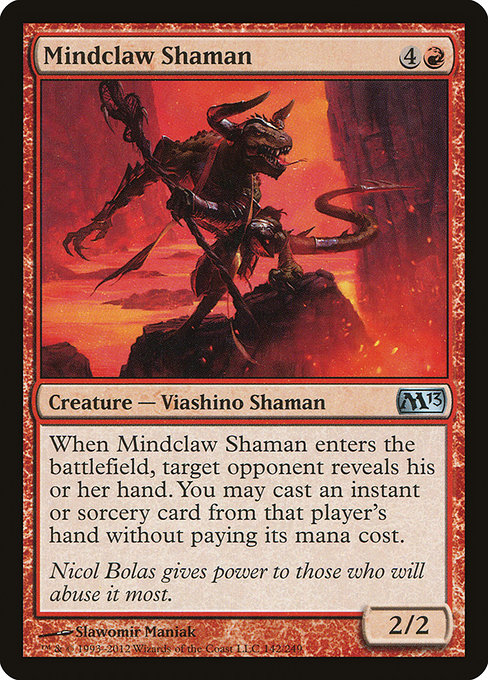
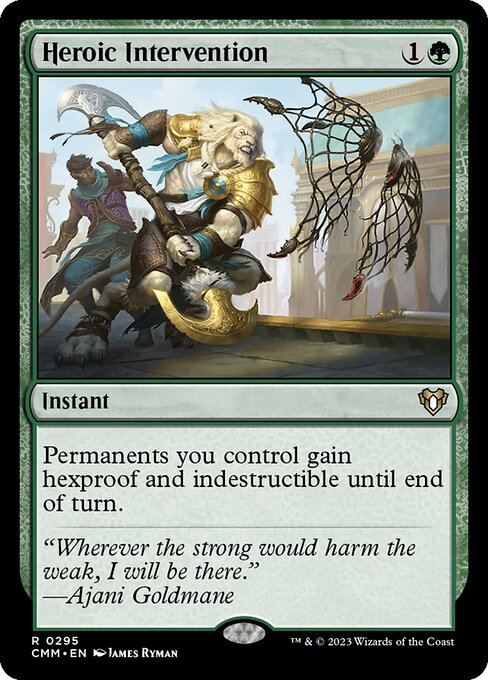

Is this Card Powerful Enough in a Vacuum to Ignore the Last Three Questions?
This is by far the trickiest of the questions in deck construction, and the one that is also easiest to get completely wrong. As a rule of thumb, I’ve found that if the card(s) in question cannot win you the game outright, the answer is usually “No.”
Cards like Insurrection, Finale of Devastation, Rise of the Dark Realms, Armageddon, and Expropriate are cards that often belong to this category, and should be added very sparingly to your deck. Your goal should generally be to win using the strategy you’ve set out to use – not on the backs of generically powerful cards with game breaking effects.
That doesn’t mean it’s wrong to use cards like these to your fullest advantage – quite the opposite. It does mean that if cards like these are the only way your deck can win, you probably need to examine your underlying strategies to assess why they aren’t pulling their weight.
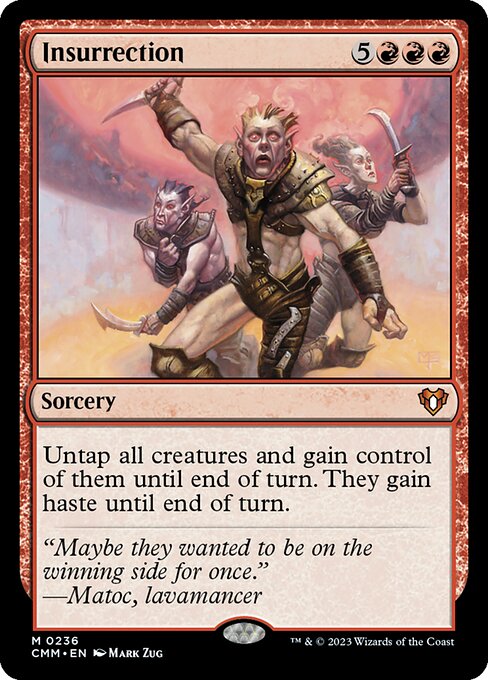
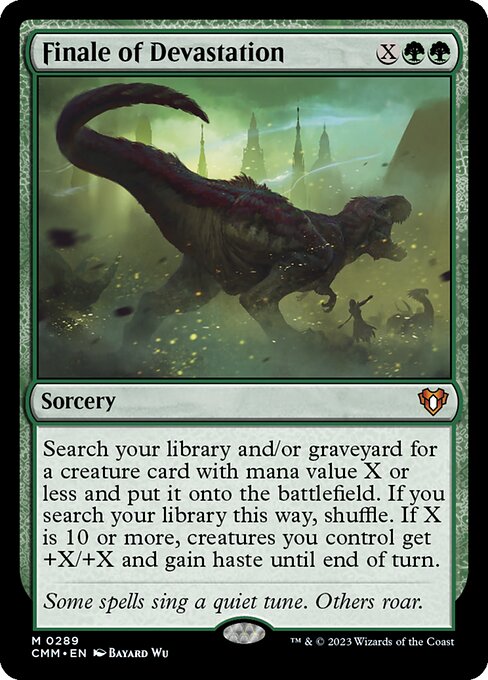


How to Build a Commander Deck in MTG: Your Mana Is Your Foundation
Much of Commander’s appeal is the ability to cast cool, big, and splashy spells you’d never see in a traditional 60 card Magic deck. If you can’t get enough and/or the right colors of mana, however, your ability to do more than pass the turn quickly plummets. We’ve all been there, and I think we can all agree games that play out in this fashion suck.
So let’s start taking steps to avoid these common problems that pop up when playing a Magic Commander Deck by examining our deck construction.
First, I recommend your deck have approximately 37 lands to start.
This has been my baseline for years, and has reliably given me the most solid starting place to assess whether my deck needs a little more or a little less mana to do what is being asked of it. You may use low converted mana cost (CMC) mana rocks like Sol Ring or Mana Crypt as part of this tally.
Second, look at your statistics.
There are a number of resources out there that allow you to plug in your decklist and get a breakdown of what percentage of your cards need specific colors of mana, what the average converted mana cost of your cards is, and other helpful information (I’m partial to Tapped Out personally).
You don’t need to perfectly balance the CMC of your cards with your mana base, but you will want to keep each color’s CMC and mana base percentage within 10% of each other (reduce this percentage a little if you’re playing with 4 or 5 colors). Decks with 1 or fewer colors don’t need to concern themselves with this as much for obvious reasons.
Third, see if you can find lands that cover more than one of your colors (especially if they can enter untapped).
While some might argue you should do this second, looking at your deck’s composition gives you a better idea of which colors you need more access to, which will help narrow down what you should be considering. Additionally, lands that enter the battlefield tapped can slow down your game plan the more you lean on them – but will often be easier on your budget.
Don’t be discouraged from using these as you’re getting started, but if you’re planning to optimize your build, you should prepare to phase as many of these out over time as your budget allows.
There can also be too much of a good thing in this category – do not take this deck building step as an endorsement to replace all basic lands in your deck – there are plenty of cards that can prey on you for pursuing this route like Back to Basics, Ruination, and Price of Progress.
You should also be prepared to revisit this section as you make changes to your deck.
Fourth, find ways to get access to your mana more quickly.
In green, this can be done by putting extra lands into play with mana ramp spells like Nature’s Lore, Cultivate, Kodama’s Reach, and Skyshroud Claim.
If your deck does not have access to green, you might have to get more creative by using cards like Tithe, Pilgrim’s Eye, or even Demonic Tutor to put lands into your hand, cards like Mana Geyser, High Tide, or Caged Sun to get a big payoff, or mana rocks like Arcane Signet, Coalition Relic, and the Ravnica Signet cycle (Boros Signet, Izzet Signet, etc.) to speed things along at the risk of seeing them destroyed later.

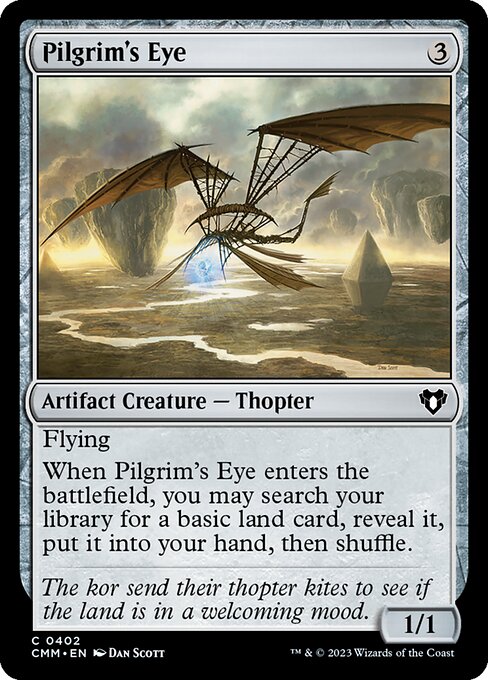


To learn more about the best mana ramp spells in Commander, I’ve also created in-depth guides for Green, White, Blue, Red, Black, Multicolor, and Mana Rocks to help you get the mana you need as quickly as possible, regardless of the colors you’re playing.
Where Can I Research Beginner Cards and Strategies to Build a Commander Deck That Are Beginner-Friendly?
I’ll be putting more content out on this website over time, but there are some great general resources I also recommend you have a look at:
- Gatherer: The official WotC Magic card database)
- EDHREC: A great resource that compiles data from a huge variety of decklists and strategies
- Tapped Out: Another deck building tool that houses a lot of decklists and manages a lot of the data and number crunching of deck composition for you
- The Commander’s Quarters: A YouTube channel that focuses on budget builds that deliver solid gameplay experiences
- The Command Zone: A YouTube channel that has revolved around discussion and gameplay of the Commander format for years
Whether you’re just getting started or are looking for a way to take your game to the next level, these resources will give you the tools you need to see what is out there and find what works best for your budget and style of gameplay. The final piece of advice I can offer you is to make sure you spend time getting lots of games in with your decks once they’re built.
This is the single best way to find out out what works, what doesn’t, and most importantly, why. Using this information, you’ll be able to sharpen both your skills and instincts over time, which will ultimately help you grow as both a deck builder and a player.
I’m a huge fan of the Commander (EDH) decks in Magic The Gathering because I have ruined many a good player’s night with them. If you follow these same steps I use to build my own decks then I’m confident that you will create outstanding Commander decks and see what the big deal is.
For more guidance on building a winning EDH Commander deck in MTG consider taking a look at some of the other Magic articles I wrote. This is a topic I’m passionate about and I love sharing my insights when it comes to MTG cards, strategies, and building nightmare decks. Enjoy!
Other Magic Articles You May Love
- Best Red Tutors Commander MTG
- Best Colorless Board Wipes Commander MTG
- Best Places to Buy MTG Booster Boxes
- Best Places to Buy MTG Single Cards
- What Does it Cost to Grade My MTG Cards?
- Best Black Mana Ramp Commander MTG
Braden is a founder of Assorted Meeples and has been a gamer & writer with a vivid imagination all his life. Don’t believe us? Check out his excitement when meeting Goosebumps author R.L. Stine as a kid! An avid Magic: The Gathering spellslinger for over 15 years, you can always convince him to shuffle up for a game (or three!) of Commander.

